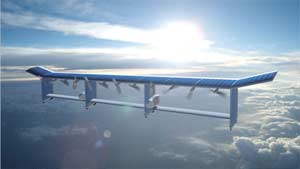Ultra-long endurance and ultra-fast deployment are the targets of new US programs to demonstrate technology for future autonomous aircraft
Whether it is an aircraft that will stay aloft for its entire five-year life, or be rushed by rocket to fill a surveillance gap half the world away, the US Defense Advanced Research Projects Agency wants to push the boundaries of unmanned aviation to extremes.
Exploring the outer limits of technology is DARPA's charter, and the agency has its successes and failures, but the stated goals of its latest UAV programmes are raising eyebrows.
"We want to completely change the paradigm of how we think of aircraft," says Daniel Newman, manager of the Vulture programme to demonstrate an unmanned aircraft capable of staying aloft for five years. "Aviation has a perfect record - we've never left one up there. We will attempt to break that record."
Record breaking has played a key part in advancing aviation, from Bleriot's 1909 Channel crossing and Lindberg's 1927 transatlantic flight to Voyager's 1986 unrefuelled circumnavigation, but designing an aircraft that can be launched then not touched for five years seems a stretch, even for DARPA.
Northrop Grumman's Global Hawk UAV can stay aloft for 40h Aerovironment's hydrogen-fuelled Global Observer aims for a week and there are designs with endurance measured in months. "What would it take to force people to break with the way they operate aircraft, so they no longer operate it as an aircraft?" says DARPA's Wade Pulliam. "It's more than a month - five years gets you there."
The ability to "close the business case" on an aircraft that could be launched and then not maintained or brought home for five years would be a "paradigm shift", says Newman. "We would no longer define an aircraft by the launch, recover, maintain, launch cycle."
But the challenges of an "infinite endurance" aircraft are enormous, and include increasing system reliability, closing the energy cycle, maximising aero-structural effiency and preventing materials degrading over their long exposure to stratospheric flight.
To enable a paradigm shift, DARPA has set the goals for Vulture as five years on station with a 450kg (1,000lb) payload, 5kW of onboard power and sufficient loiter speed to stay on station for 99% of the time against winds encountered at 60,000-90,000ft altitude,
Essentially, the Vulture is an aircraft that operates like a satellite, but is not regulated by orbital mechanics. "It could be positioned over the battle, at 65,000ft versus 260 miles," says Pulliam. Operating as a pseudo-satellite in the stratosphere and not low Earth orbit would provide a 65dB improvement in communications capability, he says, and significantly increase onboard sensor resolution.
There are three architecture options, says Newman: a single ultra-reliable system equivalent to a satellite a modular vehicle where pieces can fly home to be repaired and replaced and an aircraft that can be serviced and replenished while remaining on station.

